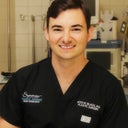The only way to absolutely guarantee no necrosis is to NOT have the surgery. Short of that, there will always be a risk. The necrosis risk is due to the fact that the blood supply is compromised during the dissection of the tissue, and further compromised by putting the tissue under tension on closing. Hopefully, the surgery is done in such a way that remaining blood supply can maintain the tissues in a healthy state until healing is complete.Risks increase with some diseases like high blood pressure, diabetes, kidney disease, etc. Other things that can contribute include obesity, poor physical health, and SMOKING. Improper application of binders may also lead to tissue necrosis.So I would say the best way to avoid necrosis is to get into great shape, stop smoking, get diseases under control, get weight optimized, and have a frank discussion with your doctor to determine what steps you should take. Sometimes, it is best not to have surgery, especially if you cannot get risks down to an acceptable level.Hope this helps.Sek




